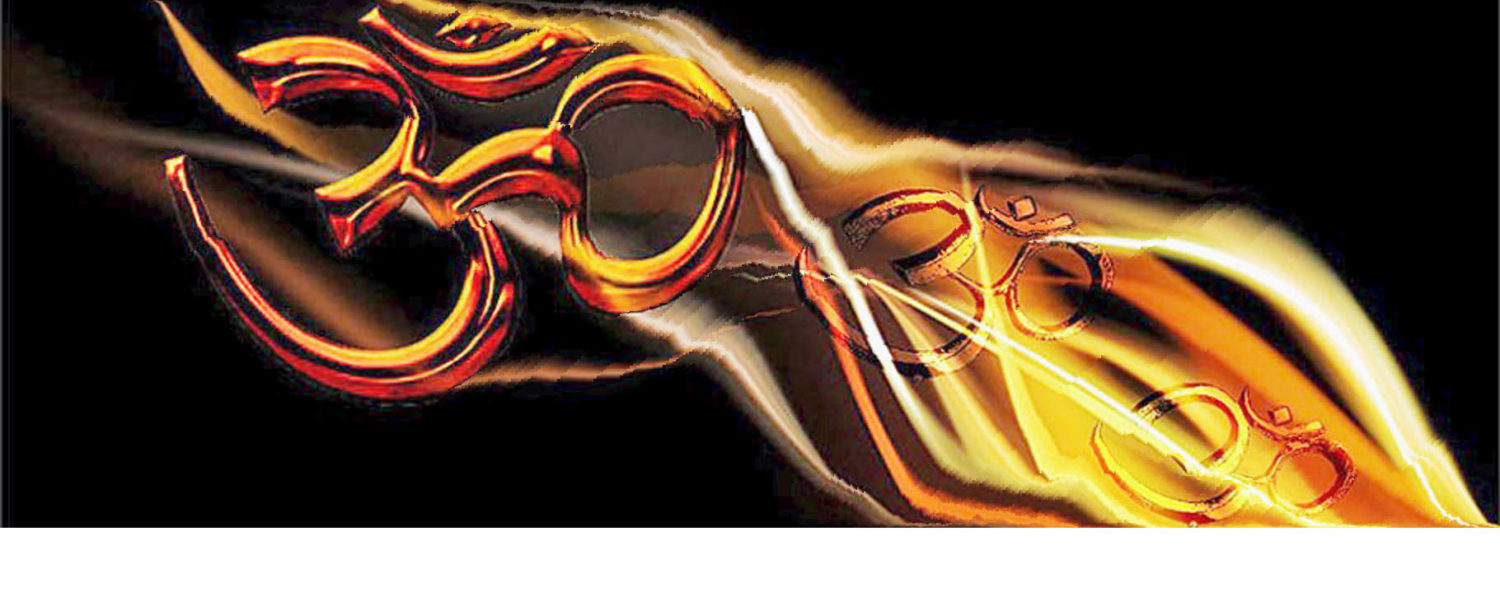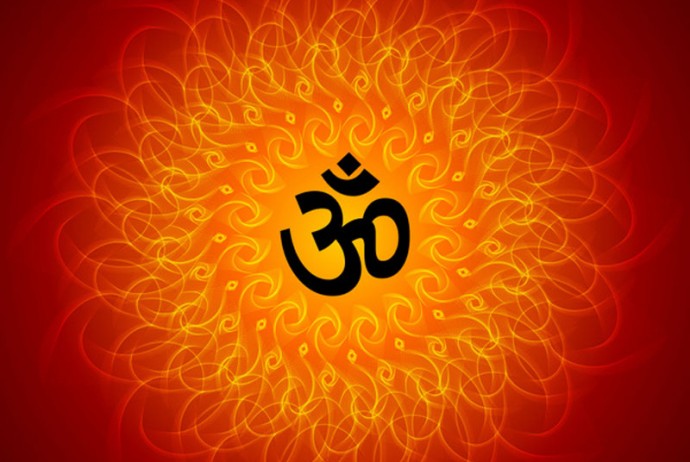Pavahari Baba
Sketch of the Life of Pavahari Baba
By Swami Vivekananda
In religion we have the man of intense thought, of great activity in bringing help to others, the man of boldness and daring self-realisation, and the man of meekness and humility.
The subject of this sketch was a man of wonderful humility and intense self-realization.
Born of Brâhmin parents in a village near Guzi, Varanasi, Pavhâri Bâbâ, as he was called in after life, came to study and live with his uncle in Ghazipur, when a mere boy. At present, Hindu ascetics are split up into the main divisions of Sannyâsins, Yogis, Vairâgis, and Panthis. The Sannyasins are the followers of Advaitism after Shankarâchârya; the Yogis, though following the Advaita system, are specialists in practicing the different systems of Yoga; the Vairagis are the dualistic disciples of Râmânujâchârya and others; the Panthis, professing either philosophy, are orders founded during the Mohammedan rule.
The uncle of Pavhari Baba belonged to the Ramanuja or Shri sect, and was a Naishthika Brahmachârin, i.e. one who takes the vow of lifelong celibacy. He had a piece of land on the banks of the Ganga, about two miles to the north of Ghazipur, and had established himself there. Having several nephews, he took Pavhari Baba into his home and adopted him, intending him to succeed to his property and position.
Not much is known of the life of Pavhari Baba at this period. Neither does there seem to have been any indication of those peculiarities which made him so well known in after years. He is remembered merely as a diligent student of Vyâkarana and Nyâya, and the theology of his sect, and as an active lively boy whose jollity at times found vent in hard practical jokes at the expense of his fellow-students.
Thus the future saint passed his young days, going through the routine duties of Indian students of the old school; and except that he showed more than ordinary application to his studies, and a remarkable aptitude for learning languages, there was scarcely anything in that open, cheerful, playful student life to foreshadow the tremendous seriousness which was to culminate in a most curious and awful sacrifice.
Then something happened which made the young scholar feel, perhaps for the first time, the serious import of life, and made him raise his eyes, so long riveted on books, to scan his mental horizon critically and crave for something in religion which was a fact, and not mere book-lore. His uncle passed away. One face on which all the love of that young heart was concentrated had gone, and the ardent boy, struck to the core with grief, determined to supply the gap with a vision that can never change.
In India, for everything, we want a Guru. Books, we Hindus are persuaded, are only outlines. The living secrets must be handed down from Guru to disciple, in every art, in every science, much more so in religion. From time immemorial earnest souls in India have always retired to secluded spots, to carry on uninterrupted their study of the mysteries of the inner life, and even today there is scarcely a forest, a hill, or a sacred spot which rumour does not consecrate as the abode of a great sage. The saying is well known: “The water is pure that flows. The monk is pure that goes.”
As a rule, those who take to the celibate religious life in India spend a good deal of their life in journeying through various countries of the Indian continent, visiting different shrines — thus keeping themselves from rust, as it were, and at the same time bringing religion to the door of everyone. A visit to the four great sacred places, situated in the four corners of India, is considered almost necessary to all who renounce the world.
All these considerations may have had weight with our young Brahmacharin, but we are sure that the chief among them was the thirst for knowledge. Of his travels we know but little, except that, from his knowledge of Dravidian languages, in which a good deal of the literature of his sect is written, and his thorough acquaintance with the old Bengali of the Vaishnavas of Shri Chaitanya’s order, we infer that his stay in Southern India and Bengal could not have been very short.
But on his visit to one place, the friends of his youth lay great stress. It was on the top of mount Girnâr in Kathiawar, they say, that he was first initiated into the mysteries of practical Yoga.
It was this mountain which was so holy to the Buddhists. At its foot is the huge rock on which is inscribed the first-deciphered edict of the “divinest of monarchs”, Asoka. Beneath it, through centuries of oblivion, lay the conclave of gigantic Stupas, forest covered, and long taken for hillocks of the Girnar range. No less sacred is it still held by the sect of which Buddhism is now thought to be a revised edition, and which strangely enough did not venture into the field of architectural triumphs till its world-conquering descendant had melted away into modern Hinduism. Girnar is celebrated amongst Hindus as having been sanctified by the stay of the great Avadhuta Guru Dattâtreya, and rumour has it that great and perfected Yogis are still to be met with by the fortunate on its top.
The next turning-point in the career of our youthful Brahmacharin we trace to the banks of the Ganga some where near Varanasi, as the disciple of a Sannyasin who practiced Yoga and lived in a hole dug in the high bank of the river. To this yogi can be traced the after-practice of our saint, of living inside a deep tunnel, dug out of the ground on the bank of the Ganga near Ghazipur. Yogis have always inculcated the advisability of living in caves or other spots where the temperature is even, and where sounds do not disturb the mind. We also learn that he was about the same time studying the Advaita system under a Sannyasin in Varanasi.
After years of travel, study, and discipline, the young Brahmacharin came back to the place where he had been brought up. Perhaps his uncle, if alive, would have found in the face of the boy the same light which of yore a greater sage saw in that of his disciple and exclaimed, “Child, thy face today shines with the glory of Brahman!” But those that welcomed him to his home were only the companions of his boyhood — most of them gone into, and claimed for ever by, the world of small thought and eternal toil.
Yet there was a change, a mysterious — to them an awe-inspiring — change, in the whole character and demeanour of that school-day friend and playmate whom they had been wont to understand. But it did not arouse in them emulation, or the same research. It was the mystery of a man who had gone beyond this world of trouble and materialism, and this was enough. They instinctively respected it and asked no questions.
Meanwhile, the peculiarities of the saint began to grow more and more pronounced. He had a cave dug in the ground, like his friend near Varanasi, and began to go into it and remain there for hours. Then began a process of the most awful dietary discipline. The whole day he worked in his little Âshrama, conducted the worship of his beloved Râmachandra, cooked good dinners — in which art he is said to have been extraordinarily proficient — distributed the whole of the offered food amongst his friends and the poor, looked after their comforts till night came, and when they were in their beds, the young man stole out, crossed the Ganga by swimming, and reached the other shore. There he would spend the whole night in the midst of his practices and prayers, come back before daybreak and wake up his friends, and then begin once more the routine business of “worshipping others”, as we say in India.
His own diet, in the meanwhile, was being attenuated every day, till it came down, we are told, to a handful of bitter Nimba leaves, or a few pods of red pepper, daily. Then he gave up going nightly to the woods on the other bank of the river and took more and more to his cave. For days and months, we are told, he would be in the hole, absorbed in meditation, and then come out. Nobody knows what he subsisted on during these long intervals, so the people called him Pav-âhâri (or air-eater) Bâbâ (or father).
He would never during his life leave this place. Once, however, he was so long inside the cave that people gave him up as dead, but after a long time, the Baba emerged and gave a Bhândârâ (feast) to a large number of Sâdhus.
When not absorbed in his meditations, he would be living in a room above the mouth of his cave, and during this time he would receive visitors. His fame began to spread, and to Rai Gagan Chandra Bahadur of the Opium Department, Ghazipur – a gentleman whose innate nobility and spirituality have endeared him to all — we owe our introduction to the saint.
Like many others in India, there was no striking or stirring external activity in this life. It was one more example of that Indian ideal of teaching through life and not through words, and that truth bears fruit in those lives only which have become ready to receive. Persons of this type are entirely averse to preaching what they know, for they are for ever convinced that it is internal discipline alone that leads to truth, and not words. Religion to them is no motive to social conduct, but an intense search after and realisation of truth in this life. They deny the greater potentiality of one moment over another, and every moment in eternity being equal to every other, they insist on seeing the truths of religion face to face now and here, not waiting for death.
The present writer had occasion to ask the saint the reason of his not coming out of his cave to help the world. At first, with his native humility and humour, the saint gave the following strong reply humorously:
“A certain wicked person was caught in some criminal act and had his nose cut off as a punishment. Ashamed to show his noseless features to the world and disgusted with himself, he fled into a forest; and there, spreading a tiger-skin
on the ground, he would feign deep meditation whenever he thought anybody was about. This conduct, instead of keeping people off, drew them in crowds to pay their respects to this wonderful saint; and he found that his forest-life had brought him once again an easy living.
Thus years went by. At last the people around became very eager to listen to some instruction from the lips of the silent meditative saint; and one young man was specially anxious to be initiated into the order. It came to such a pass that any more delay in that line would undermine the reputation of the saint. So one day he broke his silence and asked the enthusiastic young man to bring on the morrow a sharp razor with him. The young man, glad at the prospect of the great desire of his life being speedily fulfilled, came early the next morning with the razor. The noseless saint led him to a very retired spot in the forest, took the razor in his hand, opened it, and with one stroke cut off his nose, repeating in a solemn voice, ‘Young man, this has been my initiation into the order. The same I give to you. Do you transmit it diligently to others when the opportunity comes!’ The young man could not divulge the secret of this wonderful initiation for shame, and carried out to the best of his ability the injunctions of his master. Thus a whole sect of nose-cut saints spread over the country.”
Ending the story, the saint asked,” Do you want me to be the founder of another such sect?”
Later on, in a more serious mood, another query to the saint brought the answer: “Do you think that physical help is the only help possible? Is it not possible that one mind can help other minds even without the activity of the body?”
When asked on another occasion why he, a great Yogi, should perform Karma, such as pouring oblations into the sacrificial fire, and worshipping the image of Shri Raghunâthji, which are practices only meant for beginners, the reply came: “Why do you take for granted that everybody makes Karma for his own good? Cannot one perform Karma for others?”
Then again, everyone has heard of the thief who had come to steal from his Ashrama, and who at the sight of the saint got frightened and ran away, leaving the goods he had stolen in a bundle behind; how the saint took the bundle up, ran after the thief, and came up to him after miles of hard running; how the saint laid the bundle at the feet of the thief, and with folded hands and tears in his eyes asked his pardon for his own intrusion, and begged hard for his
acceptance of the goods, since they belonged to him, and not to himself.
We are also told, on reliable authority, how once he was bitten by a cobra; and though he was given up for hours as dead, he revived; and when his friends asked him about it, he only replied that the cobra “was a messenger from the Beloved”.
And well may we believe this, knowing as we do the extreme gentleness, humility, and love of his nature. All sorts of physical illness were to him only “messengers from the Beloved”, and he could not even bear to hear them called by any other name, even while he himself suffered tortures from them. This silent love and gentleness had conveyed themselves to the people around, and those who have travelled through the surrounding villages can testify to the unspoken influence of this wonderful man. Of late, he did not show himself to anyone. When out of his underground retiring-place, he would speak to people with a closed door between. His presence above, ground was always indicated by the rising smoke of oblations in the sacrificial fire, or the noise of getting things ready for worship.
One of his great peculiarities was his entire absorption at the time in the task in hand, however trivial. The same amount of care and attention was bestowed in cleaning a copper pot as in the worship of Shri Raghunathji, he himself being the best example of the secret he once told us of work: “The means should be loved and cared for as if it were the end itself.”
Neither was his humility kindred to that which means pain and anguish or self- abasement. It sprang naturally from the realization of that which he once so beautifully explained to us, “O King, the Lord is the wealth of those who have nothing — yes, of those”, he continued, “who have thrown away all desires of possession, even that of one’s own soul.” He would never directly teach, as that would be assuming the role of a teacher and placing himself in a higher position than another. But once the spring was touched, the fountain welled up with infinite wisdom; yet always the replies were indirect.
In appearance he was tall and rather fleshy, had but one eye, and looked much younger than his real age. His voice was the sweetest we have ever heard. For the last ten years or more of his life, he had withdrawn himself entirely from the gaze of mankind. A few potatoes and a little butter were placed behind the door of his room, and sometimes during the night this was taken in when he was not in Samâdhi and was living above ground. When inside his cave, he did not require even these. Thus, this silent life went on, witnessing to the science of Yoga, and a living example of purity, humility, and love.
The smoke, which, as we have said already, indicated his coming out of Samadhi, one clay smelled of burning flesh. The people around could not guess what was happening; but when the smell became overpowering, and the smoke was seen to rise up in volumes, they broke open the door, and found that the great Yogi had offered himself as the last oblation to his sacrificial fire, and very soon a heap of ashes was all that remained of his body.
Let us remember the words of Kâlidâsa: “Fools blame the actions of the great, because they are extraordinary and their reasons past the finding-out of ordinary mortals.”
Yet, knowing him as we do, we can only venture to suggest that the saint saw that his last moments had come, and not wishing to cause trouble to any, even after death, performed this last sacrifice of an Ârya, in full possession of body and mind.
The present writer owes a deep debt of gratitude to the departed saint and dedicates these lines, however unworthy, to the memory of one of the greatest Masters he has loved and served.












